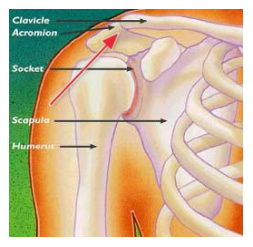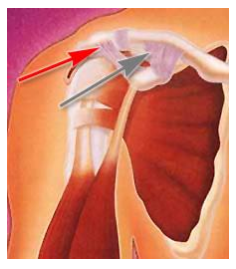Acromioclavicular (AC) Joint Separation
The AC joint is where the collarbone (clavicle) meets the highest point of the shoulder blade (acromion)
A shoulder separation is not truly an injury to the shoulder joint. The injury actually involves the acromioclavicular joint (also called the AC joint). The AC joint is where the collarbone (clavicle) meets the highest point of the shoulder blade (acromion).

The most common cause for a separation of the AC joint is from a fall directly onto the shoulder. The fall injures the ligaments that surround and stabilize the AC joint.
If the force is severe enough, the ligaments attaching to the underside of the clavicle are torn. This causes the “separation” of the collarbone and acromion. The acromion actually moves downward from the weight of the arm. This creates a “bump” or bulge above the shoulder.
The injury can range from a little change in configuration with mild pain, to quite deforming and very painful. Good pain-free function often returns even with a lot of deformity. The greater the deformity, the longer it takes for pain-free function to return.

- A mild shoulder separation involves a sprain of the AC ligament that does not move the collarbone and looks normal on X-rays.
- A more serious injury tears the AC ligament and sprains or slightly tears the coracoclavicular (CC) ligament, putting the collarbone out of alignment to some extent.
- The most severe shoulder separation completely tears both the AC and CC ligaments and puts the AC joint noticeably out of position.
For more information on symptoms and specific treatment options, visit OrthoInfo.AAOS.org
Adapted from AAOS OrthoInfo
